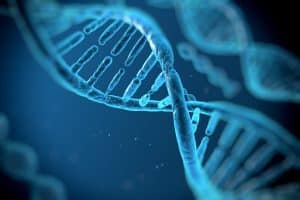 The criminal justice system is far from perfect, and it can have real world consequences. Wrongful convictions cost defendants their freedom, their reputation, their ability to earn a living, and possibly their lives. A wrongful conviction also affects the families of anyone who is wrongfully convicted.
The criminal justice system is far from perfect, and it can have real world consequences. Wrongful convictions cost defendants their freedom, their reputation, their ability to earn a living, and possibly their lives. A wrongful conviction also affects the families of anyone who is wrongfully convicted.
According to the National Institute of Justice (NIJ), an agency of the US Department of Justice, the Innocence Project, a national litigation and public policy organization that fights to exonerate wrongfully convicted individuals, states that the six reasons why wrongful convictions happen are:
- Misidentification by eyewitnesses
- False confessions or admissions
- Misconduct by the government
- Inadequate defense
- Informants
- Forensic science that is improper or not properly validated
DNA evidence can help refute seemingly irrefutable evidence. As a result of the use of DNA evidence, people in and out of the criminal justice system have learned that innocent people can be found guilty. According to The Innocence Project:
- Since the time DNA became admissible in 1986, 375 people have been exonerated by the use of DNA evidence in 37 states
- The average age of a person who is wrongfully convicted is 26.6 years, while the average age at the time of exoneration is 43
- 21 of the people exonerated by DNA evidence were serving time on Death Row
- 44 of the people exonerated had pled guilty to crimes they didn’t commit
- 69 percent of the convictions involved eyewitness identification, which includes misidentifications at in-person lineups, photo arrays, mugshot books, and other sources
- 43 percent of wrongful convictions involved the misapplication of forensic science
- 29 percent of wrongful convictions involved false confessions
- 17 percent of wrongful convictions involved informants
According to Maryville University, DNA evidence was first used in 1986 when a man confessed to the sexual assault and murder of a woman in Leicester, England. The police asked Alec Jeffreys, a genetics professor at the University of Leicester, for his assistance. “Jeffreys had previously discovered that each person’s DNA exhibited distinct patterns that could be used to distinguish one person’s DNA from another’s. Jeffreys compared DNA from the crime to [the man who confessed] and as police had suspected, it did not match.”
What is DNA evidence?
DNA is shorthand for deoxyribonucleic acid. DNA evidence is considered a reliable way of identifying someone (except for identical twins) because everyone has a unique DNA profile. DNA is now comparable to fingerprints in terms of its reliability. Just a few human cells can determine someone’s DNA. According to the NIJ, DNA evidence can do more than just identify someone. DNA evidence can:
- Place a known individual at a crime scene, in a home, or in a room where the suspect claimed not to have been.
- Refute a claim of self-defense and put a weapon in the suspect’s hand.
- Can change a story from an alibi to one of consent.
DNA can also exonerate someone who has been convicted.
How the police collect DNA evidence
Police can find DNA in many places, including skin, hair, blood cells, urine, bodily fluids, and saliva. A few examples, according to the NIJ (organized by the evidence type and the source of the DNA) follow:
- Hat, bandanna, or mask – Sweat, hair, or dandruff
- Eyeglasses – Sweat, skin
- Facial tissue, cotton swab – Mucus, blood, sweat, semen, or ear wax
- Dirty laundry – Blood, sweat, semen
- Toothpick – Saliva
- Used cigarette – Saliva
- Stamp or envelope – Saliva
- “Through and through” blood tissue.
Other sources may include a bottle, can, pillow, sheet, bite mark, or a fingernail.
Once the police collect DNA evidence and test the evidence, the evidence is cross-checked against current DNA databases. The DNA can then be used to identify a suspect – provided that the suspect’s DNA is in the DNA databases. There are different databases that the police may access, including the Combined DNA Index System (CODIS) that the FBI uses and certain genealogy databases.
The different ways to test for DNA include:
- Polymerase Chain Reaction (PCR)
- Short Tandem Repeats (STR)
- Y-Chromosome
- Mitochondrial DNA
Defense arguments when DNA evidence is involved
The defense arguments vary depending on whether the prosecution enters DNA evidence to help obtain a conviction or the defense wants to admit evidence to challenge a conviction.
If the prosecution introduces DNA evidence, the defense arguments could include:
- Illegal search. The search that led to the DNA evidence violated the defendant’s Fourth Amendment Constitutional right that protects against unreasonable searches and seizures. For example, the police usually need a warrant to search a defendant’s home or workplace.
- The chain of custody of the DNA evidence was broken. The prosecution has the burden of securing the DNA evidence from the time the evidence is collected, to the time it is sent to a crime lab, to the time it is entered into evidence at a trial. The evidence can be rejected if it can be shown that the chain of custody of the DNA evidence was broken.
- The DNA evidence may be contaminated if the police who handle the evidence taint the evidence by not handling or storing the DNA evidence properly. Any activity that compromises the collection of the evidence may constitute contaminated evidence. Contaminated evidence should be excluded.
- Improper storage. DNA evidence may be degraded through sunlight or heat. Generally, DNA evidence should be stored in a cold place.
The defense also has the right to introduce DNA evidence. Generally, DNA evidence that is offered to help clear a defendant of a crime involves:
- Evidence that is submitted at the trial of the defendant.
- Evidence that is submitted on behalf of a defendant who was previously convicted and where DNA evidence of the defendant was not previously available.
DNA evidence can be used to convict a defendant and to help free a convicted defendant. At Delius & McKenzie, PLLC, our Sevierville criminal defense lawyers understand when and how DNA can be used in criminal cases in Tennessee. To discuss your rights if you or someone you know has been charged with a criminal offense, call us or complete our contact form to schedule a free consultation. We are aggressive in our representation of criminal defendants facing charges in Sevierville, Seymour, Gatlinburg, Pigeon Forge, and the surrounding Tennessee areas.

Attorney Bryce W. McKenzie received his JD from University of Tennessee College of Law, and has been a clerk for the Court of Criminal Appeals. He is admitted in Tennessee, Federal Court, and the US Court of Appeals. Read more about Bryce W. McKenzie.




